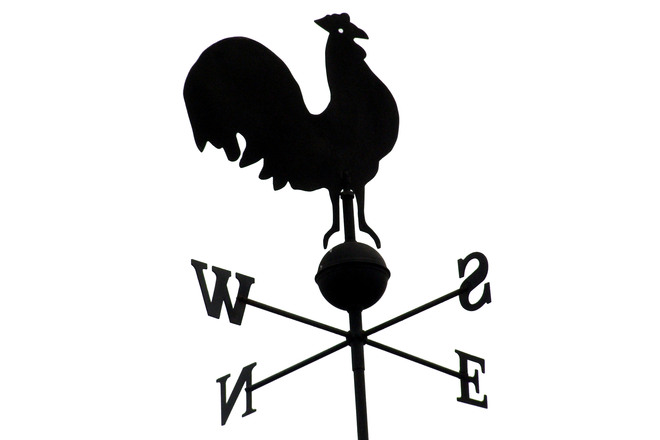Marketers Will Unite Sales & Media Touch-points in New Ways in 2016
by Rebecca Muir on 12th Jan 2016 in News

Annual 'Digital and Media Predictions' outline the need to optimise video and mobile advertising, evaluate connected TV opportunities, and develop inspiring branded content.
Today (12 January), Millward Brown, the world’s leading expert in helping businesses grow strong brands, released its annual Digital and Media Predictions for the year ahead. For the eighth consecutive year, the company is providing marketers with a clear guide on navigating the challenges and opportunities of the next 12 months.
One prediction in the 2016 report identifies the opportunity for marketers to develop clearer consumer journey maps, from awareness to purchase, in order to better integrate sales and media touchpoints.
This opportunity will become possible as digital platforms blur, to an unprecedented degree, the lines between these two previously separate disciplines, allowing marketers to optimise the consumer journey more than ever before.
Three key trends drive this opportunity: the consumer journey becoming device and channel agnostic, as people buy at the moment and in the way that best suits them; the transformation of ecommerce sites from pure sales channels into media touchpoints; and the transformation of ad creatives that link directly to purchase opportunities on digital channels.
Marketers who develop detailed consumer journey maps will be able to follow consumers along this new path to purchase, allowing them to identify the most powerful touchpoints from both sales and marketing along the way. This will give brand owners the power to deliver the seamless brand experience that consumers desire and drive brand, marketshare, and sales outcomes, simultaneously and in harmony.
“Sales and media touchpoints have traditionally been separate, but changes to the digital landscape and consumer behavior now allow marketers to unify them for the first time”, said Duncan Southgate, global brand director for digital at Millward Brown. “In 2016, we expect advertisers to map marketing contexts to an integrated consumer journey so that sales and brand-building content complement, rather than compete, with each other.”
Millward Brown anticipates additional important changes in the world’s media landscape and describes in the 2016 predictions how marketers can “get media right”. These include:
– Brands will invest more heavily in online, and particularly mobile video advertising, in 2016; yet many will waste millions by neglecting to adapt content across formats. Smart marketers will involve digital considerations much earlier in the creative process and pre-test more assiduously.
– Connected TV (or Smart TV) will take over the television viewing experience, bringing profound changes to the way people consume content. Experimentation with workable, addressable TV advertising models will begin; although live TV advertising will remain dominant for now.
– In a bid to overcome low digital advertising receptivity, more brands will become content creators. As marketing moves from disruption to attraction, inspiring content marketing will move up the corporate agenda.
“The recent rise of ad blocking software means that consumer receptivity will be a big issue in 2016. Brands that fail to target consumers appropriately, adapt content across formats, or rely solely on paid advertising content are unlikely to build engagement and drive sales. The ability to connect in digital platforms at a time when consumers are willing to do so, and with great content in a format that is not intrusive, will separate the successful marketers from those that simply annoy”, said Southgate.
ExchangeWire spoke exclusively to some of the industry's thought leaders and asked them to share their views on the predictions made by Millward Brown.
Antoine de Kermel, MD EMEA at TVTY, said:
“Millward Brown previously found 32% of time on devices is spent dual screening while watching TV, with nearly half (48%) doing so during ad breaks. Clearly there’s a huge opportunity for marketers to engage with consumers at this time and this will only increase with the rise of Connected TV.
Live TV advertising will remain important because the biggest moments for consumers will always be broadcast live. Last year’s X Factor was watched in real-time by over eight million people and over ten million tuned in to watch England lose in the Rugby World Cup.
However, considering peak consumer interest in a TV ad occurs within 10 seconds of the ad being shown, brands need to serve digital ads instantly to capture this interest. Our research shows marketers are missing out on this moment marketing opportunity as only 1% of UK brands currently react to TV ads in less than one minute.”
Greg Carroll, country manager UK, StickyADS.tv said:
"Brands have commonly been guilty of not adapting creative to how people consume media on mobile devices. When it comes to mobile video users are as, if not more engaged than if they were to view the ad in a desktop environment because they have had to act to initiate the ad. Couple this with the severe lack of quality inventory in the UK and it means advertisers, as well as publishers and technology providers, need to get this right in 2016.
We are already seeing stellar growth in the Connected TV space. Broadcasters across the world are testing various solutions to achieve the highest value for each impression. Progress towards programmatic linear (live) TV will need technology providers to address and cater to the way TV is currently bought, and also the logistics of handling what is a far more regulated space, especially in the UK."
Owen Hanks, general manager Europe, YuMe said:
"Brands will invest more heavily in online and particularly mobile video advertising in 2016, yet many will waste millions by neglecting to adapt content across formats. Smart marketers will involve digital considerations much earlier in the creative process and pre-test more assiduously.
This will be another growth year for digital video, especially on mobile screens, due to consumer adoption and availability of content on fragmented devices. Mobile presents a particularly exciting opportunity due to strong engagement with the consumer. Adapting creative for the right screen is an important part of the consideration for all brands and agencies, and video ad length, and dark or light creative all play a factor. Industry research, as well as YuMe’s own research, demonstrates the need to adapt content by device, and having this knowledge from the start of the creative consideration is enormously valuable. Furthermore, testing creative – which has been the norm in traditional channels for decades – will enable brands to generate better returns.
Connected TV (or Smart TV) will take over the television viewing experience, bringing profound changes to the way people consume content. Experimentation with workable addressable TV advertising models will begin, although live TV advertising will remain dominant for now.
There is no doubt that Connected TV (Smart TVs) now comprise the lion’s share of those sold on the high street in all major western markets. The Smart TV’s ability to connect content and brands through their application platforms are a real opportunity for brands to reach audiences in an uncluttered environment. Growth in consumption of Smart TVs has no doubt been driven in large part by services such as Netflix and Amazon Prime engaging with consumers who are now discovering content in new and exciting ways. The Smart TV audience is also a highly sought after demographic. We will see growth in smart TV and addressable TV advertising to these devices and audiences throughout 2016 and beyond, although the allure of traditional TV is still the main gatekeeper for this device.
In a bid to overcome low digital advertising receptivity, more brands will become content creators. As marketing moves from disruption to attraction, inspiring content marketing will move up the corporate agenda.
Many brands would argue that they have been content creators for many decades, such as BMW’s long-form content with Madonna in the early 2000s and Budwesier’s ‘Wassup’ campaign from the same period. Brands are savvy to digital creation and now ad tech is helping them to explore a deeper and richer opportunity to engage audiences in receptive environments such as native and outstream video – which will undoubtedly continue to see huge growth in 2016".
Rebecca Mahony, CMO Teads said:
"Make sure ads follow eyeballs – it’s one of the most basic principles of advertising. So when consumers switch between multiple screens, digital campaigns should adapt to multiple devices as standard.
But, while it’s a no-brainer in theory, the challenge many marketers face is guaranteeing the same brand experience on every screen. Choosing the format is key, for example thinking about native video formats that are easily scalable and adapt to different screen sizes.
When it comes to video ads, it’s also worth thinking about length as well as content – for instance, 10 or 15 second spots work particularly well for a small screen but longer form videos are great for telling more complex brand stories.
Mobile video simply won't work unless the ad experience is relevant and unintrusive. Poor ad placements, invasive formats and non-skippable content have driven millions of users to be frustrated by mobile advertising and even install ad blockers. It’s key that as an industry, we make sure control over ads is in the hands of the user to preserve the experience that has driven the mobile boom in the first place".
For a full list of Millward Brown’s 2016 Digital and Media Predictions, please visit the Millward Brown website.
DisplayMedia SpendMobileProgrammaticTargetingTVVideo








Follow ExchangeWire